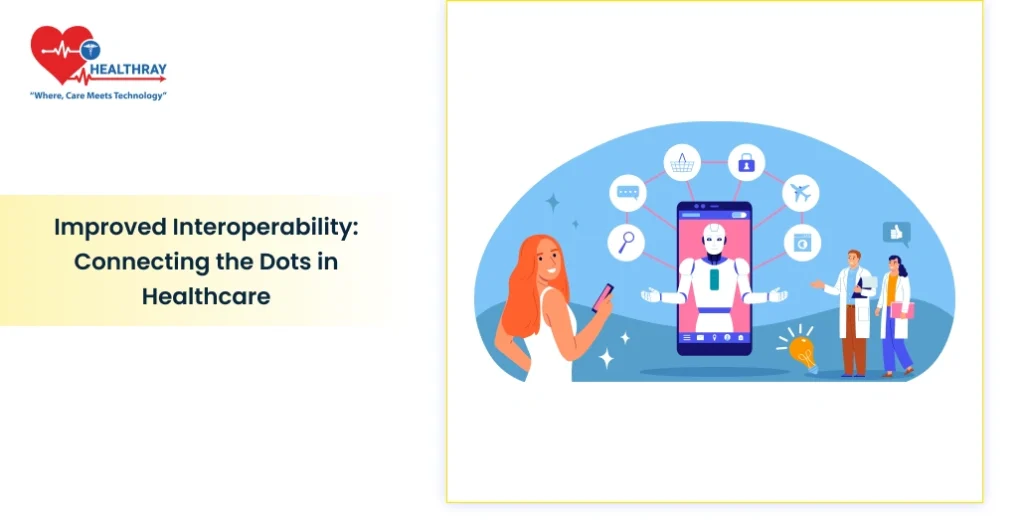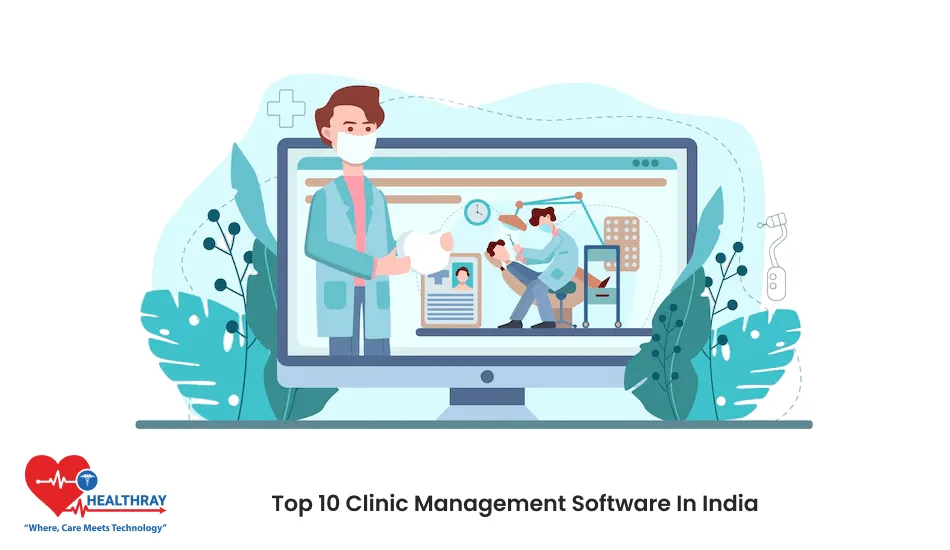Healthcare is transforming faster than ever, and Electronic Health Records (EHR) systems are at the heart of this evolution. But what does the future hold for these systems? With advancements in technology, the needs of healthcare providers, administrators, and patients are rapidly changing. In 2025, EHR systems are expected to move beyond basic documentation to become smarter, more efficient, and integral to patient care.
This post dives into the key trends that will shape the best EHR Software in 2025. From integrating artificial intelligence to enhancing interoperability, you’ll find actionable insights that will help you stay ahead. Whether you’re a healthcare provider, an IT professional, or part of an EHR vendor team, understanding these trends will be crucial.
Integration of Artificial Intelligence and Machine Learning in EHR Systems

Artificial Intelligence (AI) and Machine Learning (ML) are revolutionizing how EHR systems function. In 2025, these technologies will go beyond simple automation and play a pivotal role in clinical decision-making and operational efficiency.
AI-powered tools will analyze patient data in real time, offering clinicians predictive insights into patient outcomes. For example, algorithms could flag early signs of sepsis or predict readmission risks, giving healthcare providers a critical edge in proactive care. Machine learning will also enhance the accuracy of diagnosis by analyzing patterns across large datasets, reducing human error.
These advancements promise to alleviate one of the biggest pain points for doctors and clinicians: time spent on data entry. AI will streamline documentation by converting voice notes into structured data or auto-completing routine entries. This means more time for patient care and less time grappling with software.
However, adopting these technologies isn’t without challenges. Ensuring data quality and training AI systems to minimize bias are essential. Healthcare organizations will also need to invest in staff training to make full use of these tools.
Cloud-Based EHR Solutions: Scalability and Accessibility
Cloud-based EHR systems are set to become the norm by 2025, offering healthcare providers unmatched flexibility and scalability. Unlike traditional on-premise systems, cloud-based platforms enable organizations to access patient data anytime, anywhere, ensuring seamless care delivery.
The scalability of cloud solutions is a game-changer for healthcare providers. As patient volumes grow or services expand, cloud systems can scale effortlessly without the need for expensive hardware upgrades. This is particularly beneficial for multi-location facilities and remote healthcare services, where centralized data access is crucial.
Accessibility is another standout feature. Clinicians can retrieve patient information on the go, whether through tablets during rounds or smartphones in remote consultations. This level of accessibility not only enhances efficiency but also supports the growing demand for telemedicine and virtual care services.
However, moving to the cloud does come with challenges, particularly around data security and compliance. Robust encryption, regular audits, and adherence to regulations like HIPAA will be critical to ensuring patient trust and data integrity.
Cloud-based EHRs are paving the way for a future where healthcare systems are more adaptable, connected, and patient-focused.
Improved Interoperability: Connecting the Dots in Healthcare

One of the most anticipated developments for EHR systems in 2025 is improved interoperability. This means different healthcare systems will be able to exchange and use patient data seamlessly, eliminating silos and enhancing care coordination.
Interoperability enables a comprehensive view of a patient’s medical history, no matter where they’ve received care. Imagine a scenario where a primary care physician, a specialist, and a hospital can all access the same up-to-date patient record without duplicating tests or missing critical information. This level of connectivity leads to faster diagnoses, better treatment plans, and reduced healthcare costs.
Efforts like Fast Healthcare Interoperability Resources (FHIR) standards and government initiatives are driving this change. These frameworks make it easier for EHR vendors to create systems that “speak the same language.” For healthcare providers, this means smoother workflows and fewer barriers to collaboration.
Challenges remain, though. Ensuring data consistency across systems and protecting patient privacy during information exchanges are critical issues that must be addressed. Training staff to understand and use these integrated systems effectively will also play a crucial role.
By prioritizing interoperability, EHR systems of 2025 will break down barriers and put the focus back on delivering coordinated, high-quality care.
Enhanced User Experience and Interface Design: Simplifying Workflows
EHR systems in 2025 will prioritize user experience (UX) and interface design like never before. For years, healthcare providers have voiced frustration over clunky interfaces that add to their workload instead of reducing it. The next generation of Electronic Health Records aims to change that.
Developers are focusing on intuitive designs that mirror the simplicity of consumer apps. Streamlined dashboards, customizable workflows, and responsive designs will help clinicians navigate systems more efficiently. Instead of hunting for information, providers will have critical patient data presented clearly and in context.
Voice recognition technology is another emerging feature. By allowing clinicians to dictate notes directly into the system, it reduces the burden of typing and improves documentation accuracy. Additionally, AI-driven interfaces will offer smart suggestions, such as auto-populating fields or flagging incomplete records.
These improvements aren’t just about convenience; they’re about reclaiming time. Studies show that physicians spend significant portions of their day on administrative tasks. A user-friendly EHR system can reduce this burden, allowing more time for direct patient care.
The shift toward better UX also benefits healthcare administrators. Training time for staff will decrease, and satisfaction levels among both patients and providers are likely to improve. After all, a well-designed system isn’t just easier to use—it’s better for everyone involved in healthcare.
Telemedicine and Remote Patient Monitoring Integration

The integration of telemedicine and remote patient monitoring (RPM) into EHR systems is set to redefine how healthcare is delivered in 2025. As virtual care becomes a cornerstone of modern medicine, EHR systems are adapting to support these evolving needs.
Telemedicine relies on EHR systems to provide seamless access to patient records during virtual consultations. This ensures that clinicians have the same level of detail as they would during in-person visits. Features like integrated video conferencing, real-time chart updates, and prescription management are becoming standard.
Remote patient monitoring takes things a step further. Wearable devices, such as fitness trackers and medical‑grade sensors, continuously collect patient data like heart rate, blood pressure, and glucose levels. Clinicians can then use a bp map calculator to convert continuous blood pressure readings into mean arterial pressure (MAP) a vital metric that offers deeper insight into tissue perfusion and cardiovascular status. EHR systems upgraded with this data display help enable alerts for abnormal MAP trends, support proactive management, and improve chronic care outcomes.
These integrations also empower patients by involving them more actively in their care. For example, patient portals now allow individuals to track their own health metrics alongside their providers.
While the benefits are undeniable, there are hurdles to overcome. Ensuring data from various devices integrates smoothly into EHR systems and maintaining the security of transmitted data are key challenges.
By embracing telemedicine and RPM, EHR systems in 2025 will bridge the gap between convenience and quality in patient care.
Advanced Data Security Measures: Safeguarding Patient Information
As EHR systems evolve, so do the threats to patient data. In 2025, advanced data security measures will be a cornerstone of EHR innovation, addressing growing concerns around cyberattacks, data breaches, and privacy violations.
Healthcare providers handle vast amounts of sensitive information, making them prime targets for cybercriminals. To combat this, EHR systems are implementing stronger encryption protocols to ensure that data remains secure both in transit and at rest. Multi-factor authentication (MFA) is becoming a standard feature, requiring users to verify their identity through multiple methods before accessing the system.
Behavioral analytics is another exciting development. These systems monitor user activity within the EHR, flagging unusual behavior that could indicate unauthorized access. For example, if a login occurs from an unusual location or there’s an attempt to access an unusually large number of records, the system can trigger an alert or automatically block access.
Blockchain technology is also making its way into EHR security. By creating immutable records, blockchain ensures that any alterations to patient data are logged and traceable. This enhances both security and transparency.
While these advancements provide robust protection, compliance with regulations like HIPAA will remain essential. Regular security audits and updates will help healthcare organizations stay ahead of evolving threats.
Incorporating these measures will build trust among patients and providers, ensuring that EHR systems remain a reliable cornerstone of modern healthcare.
Regulatory Changes and Compliance: Navigating the Evolving Landscape

As EHR systems advance in functionality, staying compliant with regulatory standards becomes even more critical. By 2025, healthcare organizations and vendors will face updated regulations aimed at improving patient privacy, data interoperability, and system accountability.
Governments and healthcare authorities are introducing stricter guidelines to address the growing reliance on digital health records. For example, compliance frameworks are likely to expand to include enhanced data-sharing protocols, ensuring that patient information is exchanged securely and seamlessly across different systems and providers.
Interoperability standards, such as those driven by the 21st Century Cures Act in the U.S., will play a prominent role. These regulations focus on eliminating data-blocking practices, empowering patients with access to their own records, and fostering a more connected healthcare ecosystem. EHR vendors must adapt their systems to comply with these mandates while maintaining user-friendly designs.
Cybersecurity regulations are also becoming more stringent. Healthcare organizations will need to prove they have robust measures in place to protect patient data from breaches, including incident response plans and ongoing risk assessments.
For healthcare providers, staying compliant will require continuous staff training and system updates. Non-compliance not only risks legal repercussions but can also erode patient trust.
EHR systems in 2025 will need to strike a balance between innovation and compliance. Organizations that prioritize regulatory alignment will set themselves apart as leaders in trustworthy, efficient care.
Conclusion
The evolution of the Hospital Management System in 2025 is set to transform healthcare delivery. From AI-powered insights to seamless interoperability, these systems are moving beyond record-keeping to become indispensable tools for clinicians, administrators, and patients alike. Cloud-based solutions, enhanced user interfaces, and integrations with telemedicine are just a few of the innovations that promise to make healthcare more connected and efficient.
As these advancements unfold, addressing challenges like data security, regulatory compliance, and staff training will be crucial. Organizations that proactively adopt these trends will not only enhance patient care but also position themselves as leaders in a competitive healthcare landscape.
By understanding and preparing for these shifts, healthcare providers, IT professionals, administrators, and vendors can ensure they stay ahead of the curve. The future of EHR systems is one of collaboration, innovation, and smarter care for all.





